If you start glancing through internet sites, you’ll find people urging you to throw out your dry cat foods. They list problem after problem with kibble. And there ARE concerns with a dry diet you need to keep in mind. However, if you have a feline that loves to graze at their bowl throughout the day, you’re not doing anything wrong. Dry cat foods CAN work in a balanced diet. And we have the best options out there that WON’T lead to an overweight kitty.
Carbs, Carbs, Carbs
One of the biggest arguments against dry cat foods is the high level of carbohydrates. To produce kibble, the diets undergo an extrusion process. It sounds terrible, but it improves the quality of the protein and removes potential toxins. It also requires high-carbohydrate ingredients.
Unhappily, there’s no requirement for nutrition labels to list carbohydrate content. In North America, all commercially prepared cat foods MUST publish a guaranteed analysis. The guaranteed analysis lists the percentages of protein, fat, fiber, and moisture. So you CAN calculate the carbs using this handy calculator.
The best dry cat foods have 10% carbohydrates OR less.
Are Dry Cat Foods REALLY Okay?
That said, the dry cat food debate rages on. And it’s understandable. As with wet cat foods, there are pros and cons. And it’s important to look at both sides of the argument.
Dry cat foods solve A LOT of complications for owners:
- Easy: You scoop the food into a bowl and go. Unless you have a cat prone to overeating, most felines graze throughout the day. And YOU avoid starving kitties waiting at the door when you get home.
- Fresh: Unlike canned foods, dry food remains fresh when left out. You can even pour it into automatic feeders, so your kiddo gets a new meal on a routine basis.
- Reduced Anxiety: Rescues are often traumatized; they never know where their next meal may come from. Knowing a bowl of dry cat food’s always there calms them down.
- Cleanliness: Face it – dry food doesn’t leave a sticky, smelly residue in bowls.
On the other hand, dry cat foods also CAUSE complications:
- Water, Please: There’s almost no moisture in dry food. So your cat won’t get hydrated. You need to consider alternatives, such as a fountain.
- Potential Waste: People love to buy in bulk…until your cat refuses to eat the food. Then you’re stuck with 15 pounds of dry cat food you can’t use. And the bags don’t reseal, so you need to invest in a storage container to keep it fresh.
- Taste: While dry cat foods contain protein, the flavor comes from a coating of fat. It’s not the best situation, especially for overweight kitties.
- Medication: You can’t use dry food to disguise a pill. That makes medication time tricky.
If you have a cat who ADORES dry cat foods, consider splitting the difference. Mix in occasional wet food to get the best of both worlds.
Dry Cat Foods and Ingredients
If you don’t see that Association of American Feed Control Officials (AAFCO) label, run away. “Pet food is not regulated by the FDA, so this voluntary approval guarantees that if a problem is found with the food, a recall will be issued and announced to the public. The food company will then typically pay for a diagnostic needed for the pet’s care,” advises Dr. Kim Williams-VanDuzer, Owner of Prettyboy Veterinary Clinic. The Feline Nutrition Expert Subcommittee of AAFCO assures that the food ingredients are balanced and meet nutrition guidelines. They look for:
- High protein levels
- Moderate animal fats
- Essential vitamins, minerals, fatty acids, and amino acids
The Great Protein Debate
Everyone likes to argue about cats and protein sources. Yes, the feline ancestor came from the desert – far away from the ocean. However, those cats didn’t chase down cattle. And since no current dry cat foods use mice or other rodents as a protein source (the natural prey items of cats from those early regions), the protein debate is pointless.
Your cat can eat whatever protein they like. Protein is protein. A cat’s stomach contains a high level of hydrochloric acid and digestive juices, capable of breaking down any meat – including seafood. My cats REFUSE to eat anything other than seafood. I’ve tried over the years, and they look at me like I’m crazy. Seriously, protein is protein.
As long as the label specifies “chicken,” or “tuna,” or “beef,” and not “meat,” you’re in the clear.
The “Scary” Stuff
Commercials and marketing campaigns have turned dry cat food ingredients into the stuff of nightmares. The problem is they never explain what those “by-products” and “ash” are. Instead, they tell you they’re monsters lurking in your cat’s food.
The truth? They’re not. Here’s what those “suspect” ingredients actually mean.
- Ash: Minor minerals remaining after the meats are burned. You can find potassium, silicon, sulfur, or magnesium in ash. Some argue ash causes urine crystals. But MANY things lead to crystals – including genetics!
- By-Products: A by-product is nothing more than the organs of an animal. They’re suitable for use and clean. No hair, horns, teeth, or hooves, either. (And if you think a cat won’t eat a liver or kidney, you need to watch more Animal Planet)
- By-Product Meal: Take the by-product and dry render it. This removes the fats and oils. (Which you don’t want, anyway)
That’s it! That’s what those scary, horrible ingredients are! They’re packed full of nutrients and vitamins beneficial to your cat (though you want an ash level of 6% or lower).
If you want to avoid scary things, skip the dyes that make dry cat foods look better – to YOU.
Cats and Grain-Free Diets
Unfortunately, despite their obligate carnivore nature, cats have succumbed to the grain-free and boutique diet trend. Realistically, cats have no need for grains in their diet in the first place. But swapping in sweet potatoes and peas? That doesn’t make sense. Cats aren’t gluten-intolerant, and they don’t turn up with grains in their allergy profiles.
When the FDA started their investigation into grain-free diets and canine dilated cardiomyopathy, they found CATS with problems, too! As such, you need to avoid dry cat foods with legumes and potatoes. (Don’t worry – I checked the ingredient labels on this list for you)
Choosing a Dry Cat Food
You’re armed with the important nutritional knowledge you want to see on dry cat foods. However, you’re still going to find rows and rows of bags in the pet store. You don’t want to snag a bag at random – especially if your kitty decides they HATE it. Keep a few things in mind before you start shopping:
- Age: As with canned cat foods, dry cat foods get formulated for every life stage. You want to aim for the proper balance of nutrition. If you find a brand you like, you can move through its stages as your cat ages.
- Flavor: Cats are PICKY! They decide they like one flavor one day and a different one the next. Consider picking up SMALL bags for when your cat turns up their nose.
- Nutrients: If there’s an AAFCO label, you know there’s taurine in the dry cat food. But you also want B vitamins, amino acids, and minerals.
- Size: Dry cat foods often come in different-sized bags. If you KNOW your cat loves a particular flavor, consider going for the bulkier sizes. If you can store it in a cool, dry place, out of the sunlight, AND use it within TWO MONTHS, it’s a bargain.
Changing Dry Cat Foods
Finicky kitties make food transitions tricky. You often find yourself picking a new dry cat food. Even going between flavors in the same brand can upset a cat’s stomach if you don’t make a smooth change. You want to go easy and slow.
This is the best way to adjust your cat’s food gradually:
- Day 1-3: Mix 75% of the old food with 25% of the new food
- Days 4-6: Split the two foods, 50-50
- Days 7-9: Mix 25% of the old food with 75% of the new food
- Day 10: Completely switch to the new food
The Best Dry Cat Foods
Plenty of owners set out bowls of dry cat food every day. And they have happy, healthy cats. It’s a balanced diet and acceptable. If you’re watching the balance of nutrients, there’s nothing wrong with that choice. Other cat owners choose to mix dry cat foods with canned cat foods. With the proper juggling of calories, their cats get the best of both worlds. There’s no ONE TRUE WAY to feed cats – especially with the picky nature of felines.
These dry cat foods balance the ingredients, calories, and nutrients without sacrificing a delicious taste your cat will love.
Our cats are on a prescription diet now (pesky urinary crystals), but we’ve gone through PLENTY of dry cat foods in the past as our cats changed their preferences. And we’ve never struggled with a single overweight kitty in the bunch!
Yes, Dr. Elsey’s has that prominent “grain-free” label right on the bag. But when you read through the ingredient label? Nothing suspect! It’s an option for people who want to skip grains entirely. And with gelatin as their binder, the carbohydrate level goes UNDER 10%! You also get 59% protein, which is a hefty amount for ANY cat food. They offer two flavors – chicken or salmon – packed with omega-3s and vitamin E.
Downsides? It’s expensive. And while you CAN choose from two bag sizes, they’re both small (2 pounds or 6.6 pounds).
The Good
- <10% Carbohydrates
- 59% Protein
- 2 Flavors available
- No suspect grain-free ingredients
The Bad
- Expensive
- Bag sizes small
IAMS covers every life stage with its Proactive Health series of dry cat foods. The kitten formula builds strong immune systems while also supporting pregnant females. Adults get the correct balance of nutrients to keep them from packing on the pounds. And seniors get the extra boost of nutrients to keep their minds functioning at peak capacity. You’ll also find formulas for weight management and hairball control, sensitive skin and stomach, and urinary health. You can choose from chicken or salmon, and they come in four different sizes.
The downsides? Unhappily, the carbohydrates come in high on this food – 44%. And some cats end up with an upset stomach. You’ll want to watch them carefully.
The Good
- 36% Protein
- 2 Flavors available
- 4 Sizes available
The Bad
- 44% Carbohydrates
- May cause stomach upset
With a little work, you CAN find grain-free options for your cat’s dry food. Purina Beyond is one of those – and Purina maintains board-certified nutritionists on their staff. You have four delicious seafood options to choose from, with the fish sitting pretty in first place on the ingredient line. NO suspect ingredients sneak into the list, either. They do add in healthy probiotics to aid in digestion, as well as a healthy dose of vitamins to keep your cat healthy. And you have three bag sizes to pick from.
So what are the downsides? While seeing the fish is fantastic, people complained about the fishy smell of the food. (If you have a seafood fan, though, it’s great) Unhappily, the estimated carbs hit 38%. And if you don’t reseal the bag, the kibble gets crumbly and unappetizing.
The Good
- 40% Protein
- Probiotics added
- 4 Flavors available
- 3 Sizes available
The Bad
- 38% Carbohydrates
- Prominent fish smell
- Kibble dries out if bag not resealed
Purina Naturals is one of the best-selling dry cat foods on the market. Why? The extra fiber helps to control hairballs by gently moving any hair through your cat’s digestive system. They skip the artificial flavors and colors that other dry cat foods like to sneak in (yes, that means a dull, brown kibble). And you can choose from two different sizes. Plus, kitties love the chicken and turkey flavor.
Downsides? Yeah, the carbohydrate thing: 43% (another reason cats love it). They also add in a significant amount of corn, which is something your cats don’t need.
The Good
- 34% Protein
- 2 Sizes available
The Bad
- 43% Carbohydrates
- Corn included in ingredients
Purina ONE is another brand that caters to every life stage your cat will go through, targeting each’s particular needs. You won’t find any fillers or artificial ingredients or colors, but you WILL see a quality protein at the top of the ingredient list. You can choose from salmon or chicken, either of which will appeal to your cat. They make the blend of kibble different textures, enticing your cat to crunch them up. And you can pick from four different sizes.
The downsides? Cats LOVE this food – because it’s kind of a potato chip. The carbohydrates top 55%. You’ll want to watch the calories CLOSELY with this one. Also, they add veggies to the mixture, which your cat has no use for.
The Good
- 34% Protein
- 2 Flavors available
- 4 Sizes available
The Bad
- 55% Carbohydrates
- Vegetables included in ingredients
You’ll find various options under the Purina Pro Plan label, from specialty diets to general. The Complete Essentials label is designed with high protein levels geared toward keeping your cat’s digestion on track while boosting their natural immunity. Two different flavors (chicken or salmon) mix with rice, probiotics, AND prebiotics to keep a happy tummy working at its best. Then they add in omega-6 fatty acids for gleaming hair.
So what’s the downside? Finding a low carbohydrate dry cat food gets tricky. You’ll need to balance the good with the bad. In this case, the percentage is 53%. I can say we fed our cats Pro Plan before the need to switch to the prescription diet, and no one tipped the scales. If you watch your feeding amounts, you CAN make it work.
The Good
- 36% Protein
- Probiotics, prebiotics, and omega-6 added
- 2 Flavors available
- 6 Sizes available
The Bad
- 53% Carbohydrates
Royal Canin set out to provide essential feline nutrition with their Indoor Adult formula. They start with chicken, then add folic acid and vitamins to support healthy digestion. You can pick from three different sizes, which helps if your cat decides they aren’t fans of this dry cat food. And they’re careful with their calories to keep your indoor kitty from turning into a butterball. It’s also one of the few dry cat foods to have 0% ash. So if you’re worried about that particular percentage on the label, you can’t do better!
Downsides? Unhappily, this dry cat food comes in low on protein (29%) and high on carbs (48%). It’s a combination that makes for low calories, but it may not tempt your feline. They also use a fair amount of corn and wheat, which your cat doesn’t need.
The Good
- 0% Ash
- 3 Sizes available
The Bad
- 48% Carbohydrates
- 29% Protein
- Corn and wheat included in ingredients
If you want the number one veterinary-recommended dry cat food, you want Science Diet. The delicious chicken flavor appeals to cats right away, while YOU appreciate the addition of fish oils and amino acids. The formula provides plenty of energy to keep your cat active and engaged while staying easy to digest. And you can choose from three different sizes.
The downsides? The protein comes out on the lower side of things (35%). You may want to consider mixing in canned cat food to make up the difference. And while better than other dry cat foods, the carbs are still up there at 33%.
The Good
- Fish oils and amino acids added
- 3 Sizes available
The Bad
- 33% Carbohydrates
- 35% Protein
You’ve considered a raw diet for your cat, but the thought makes you squeamish (or you know there are concerns). Stella & Chewy’s solves the problem neatly. They took raw meat and freeze-dried morsels to destroy any lingering bacteria. The result? Dry cat food! If you want, you can even add water to rehydrate the “kibble” into wet food. You have SIX flavor options, all shelf-stable and delicious. They also come in three handy sizes, in case you want to stock up. And while it’s not perfect, the carbs come out at 12%.
So what are the downsides? While the freeze-drying process works, it isn’t flawless. In 2015, Stella & Chewy’s had two recalls due to Listeria contamination. (Raw DOES present problems) And, unhappily, the texture produced by the process is unappealing to some cats. Also, there’s a high phosphorous content, which isn’t good for seniors.
The Good
- 52% Protein
- 12% Carbohydrates
- 3 Sizes available
- 6 Flavors available
The Bad
- 2 Recalls due to contamination
- Cats may not like the texture
- Phosphorous too high for seniors
Kibbles Everywhere
The debate over dry cat foods versus wet cat foods probably won’t end any time soon. There are good points on either side of the camp. And mixing the two IS a perfectly acceptable compromise – provided you watch your calories. You don’t want to end up with a roly-poly kitty waddling around the house.
But dry cat foods aren’t the enemy they’re often made out to be. You can find the perfect diet to keep your kitty – and you – happy. It just takes a little homework on your part.

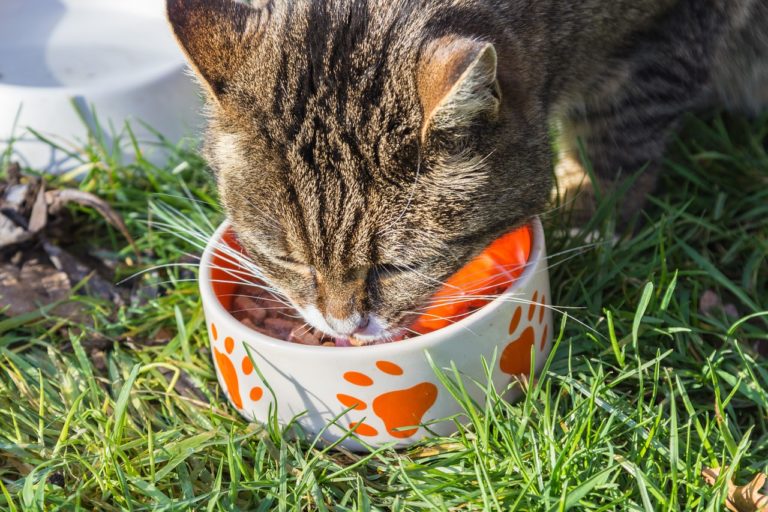
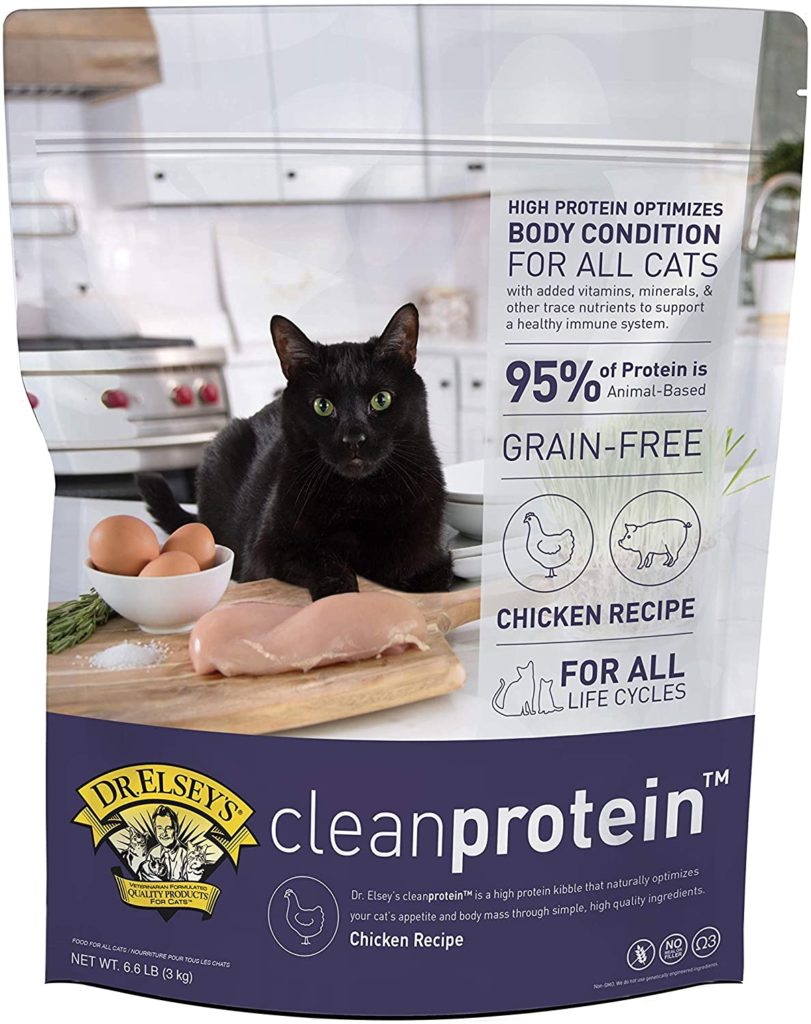
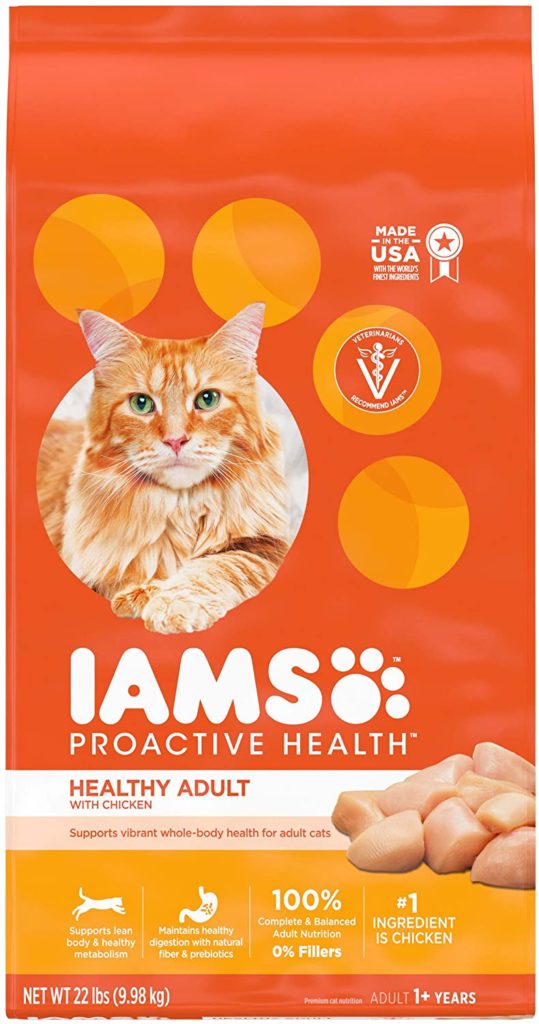
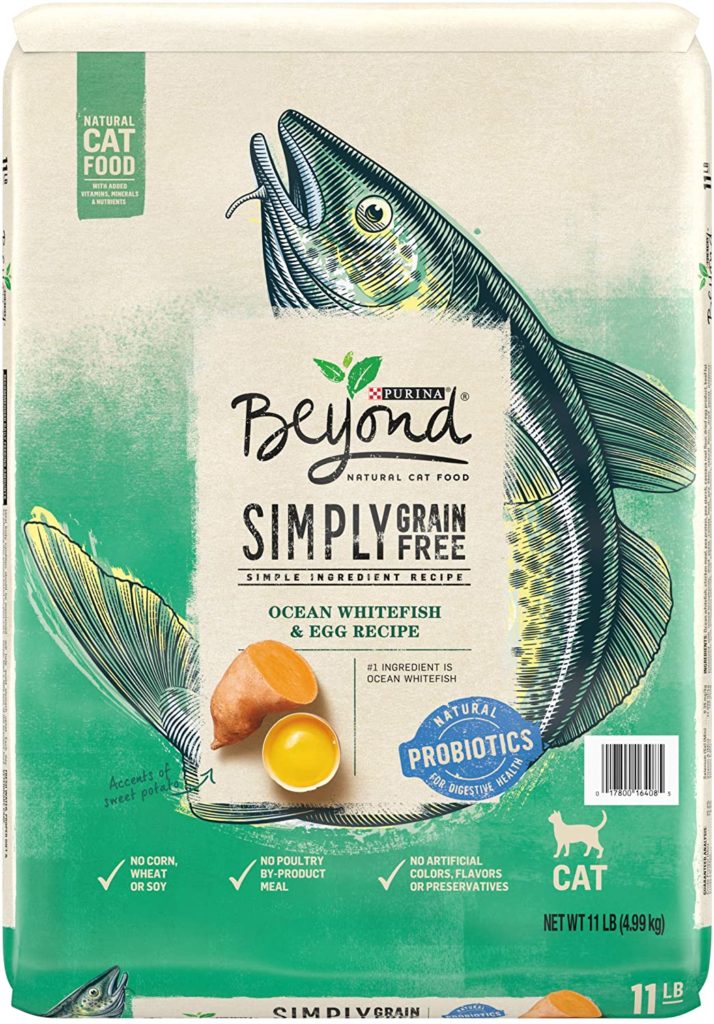
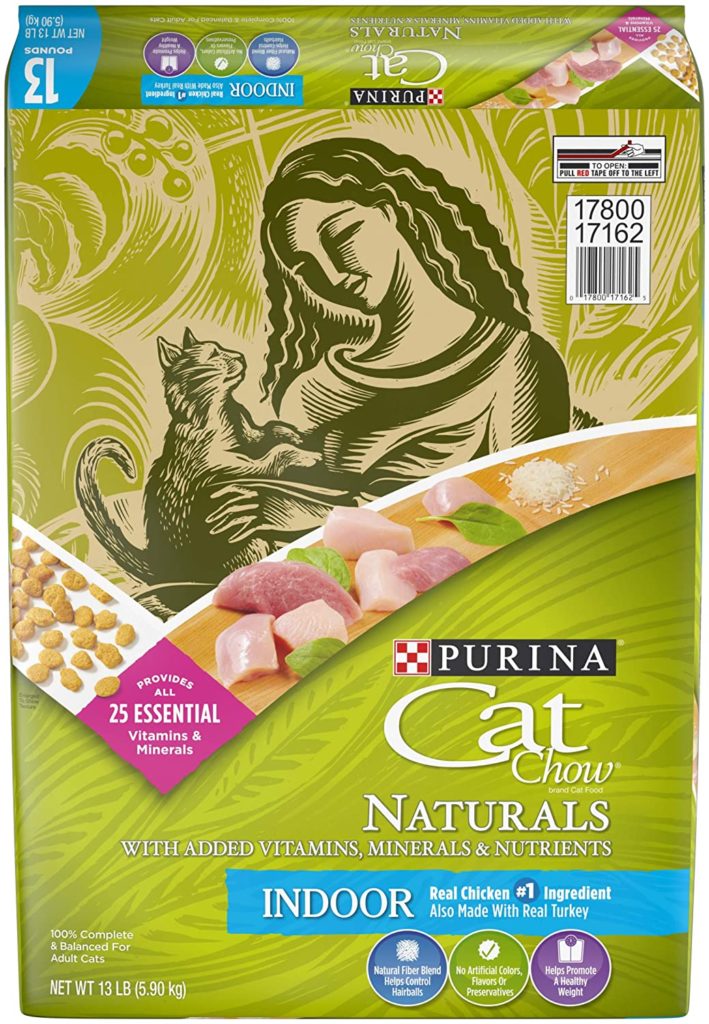
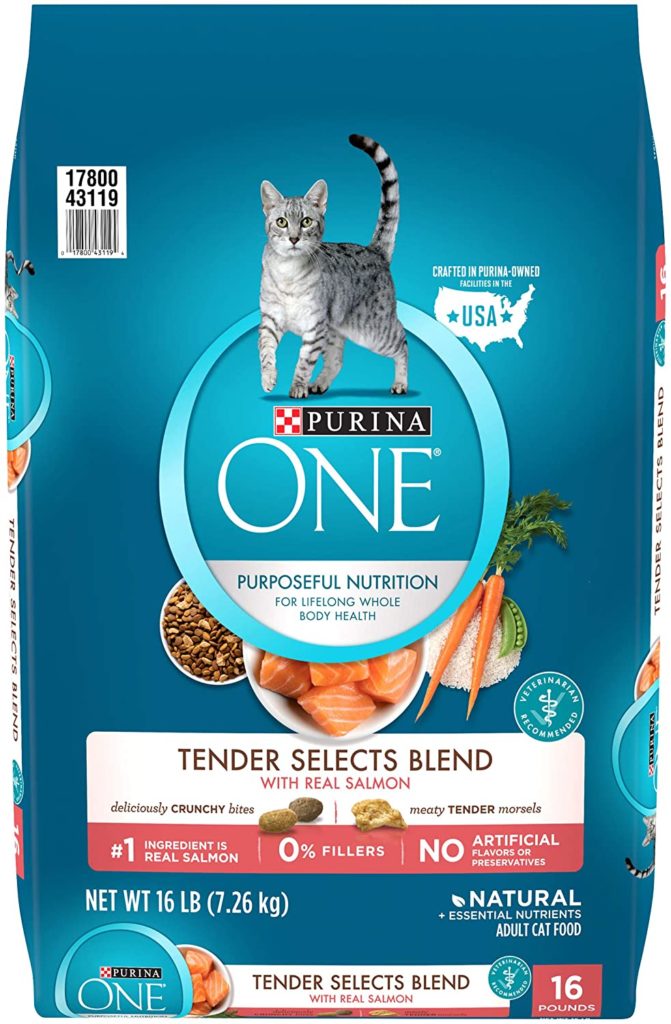
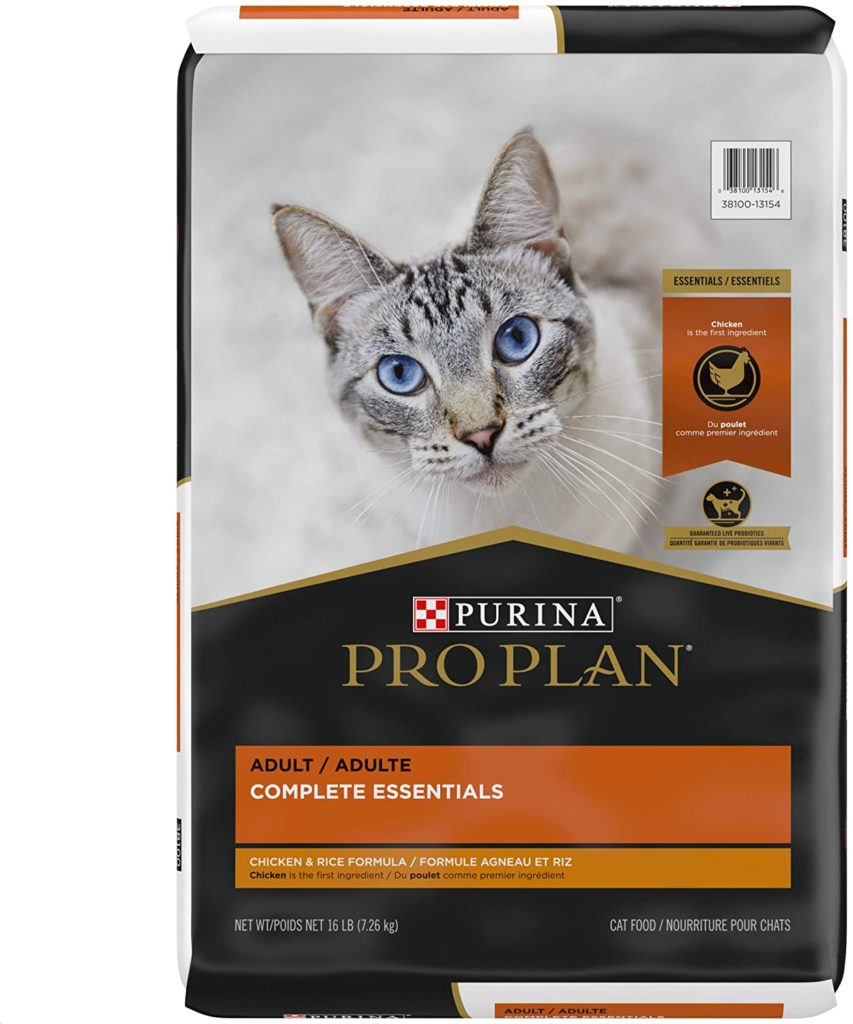
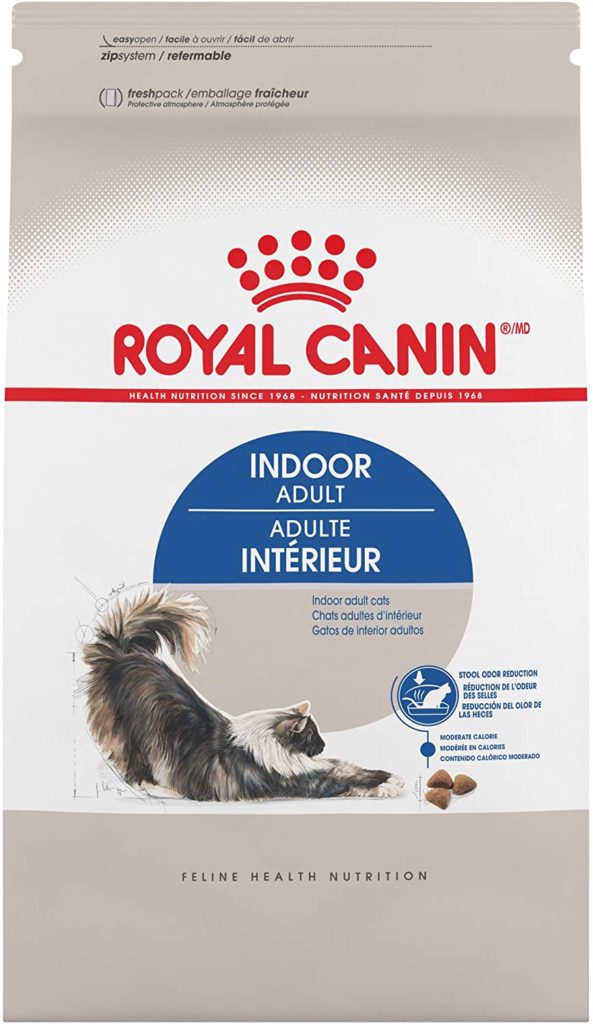

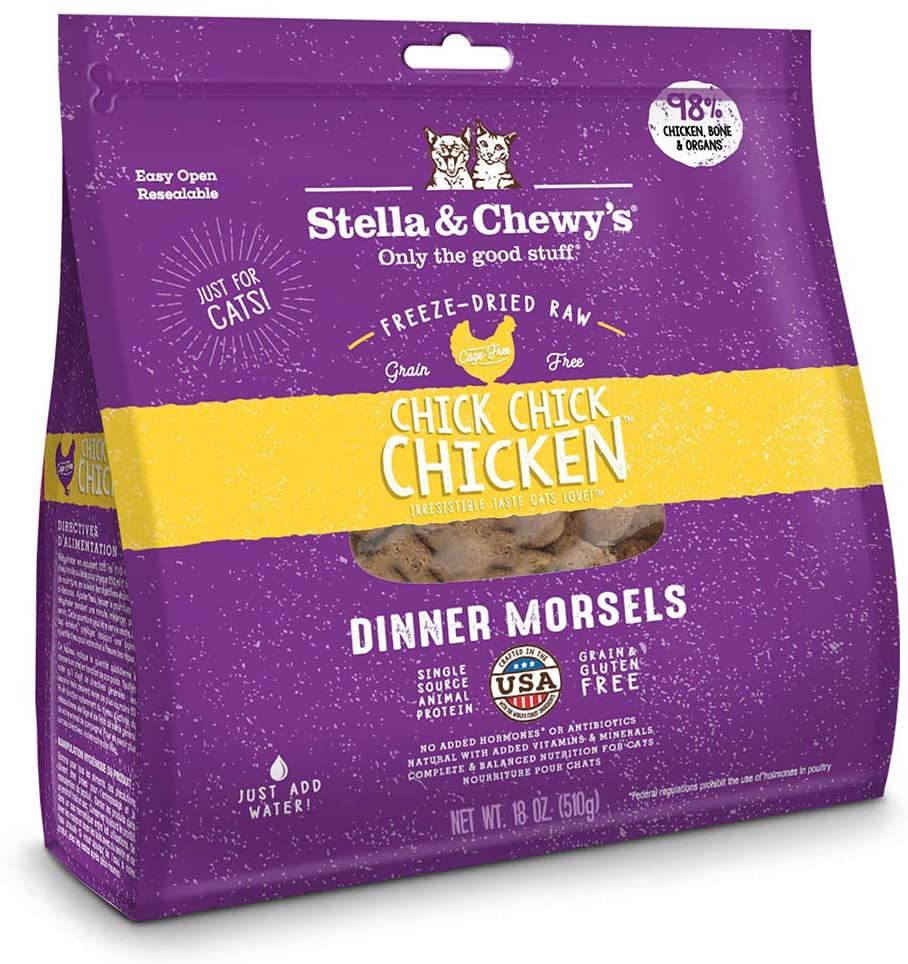

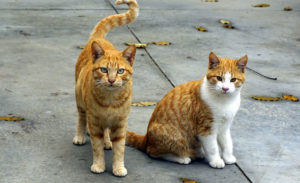
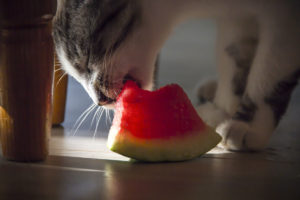
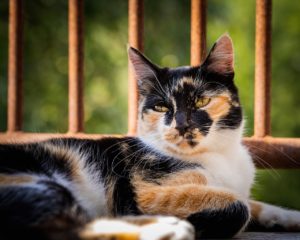
No comment yet, add your voice below!